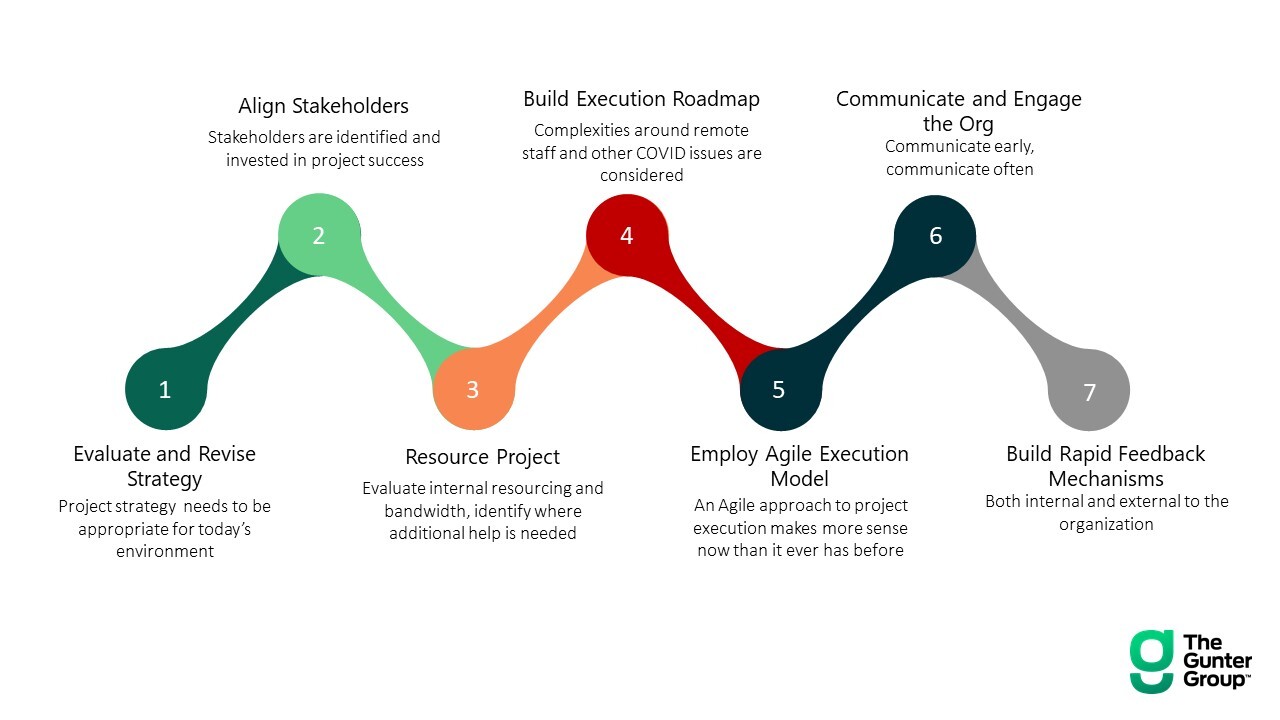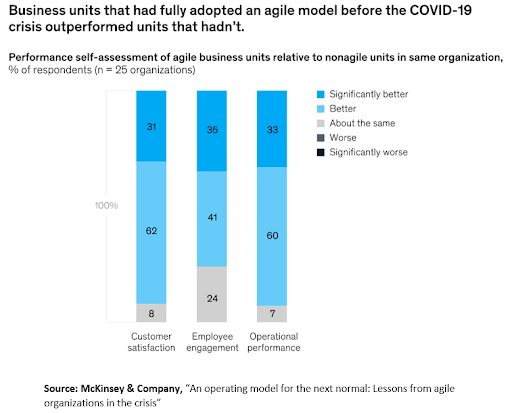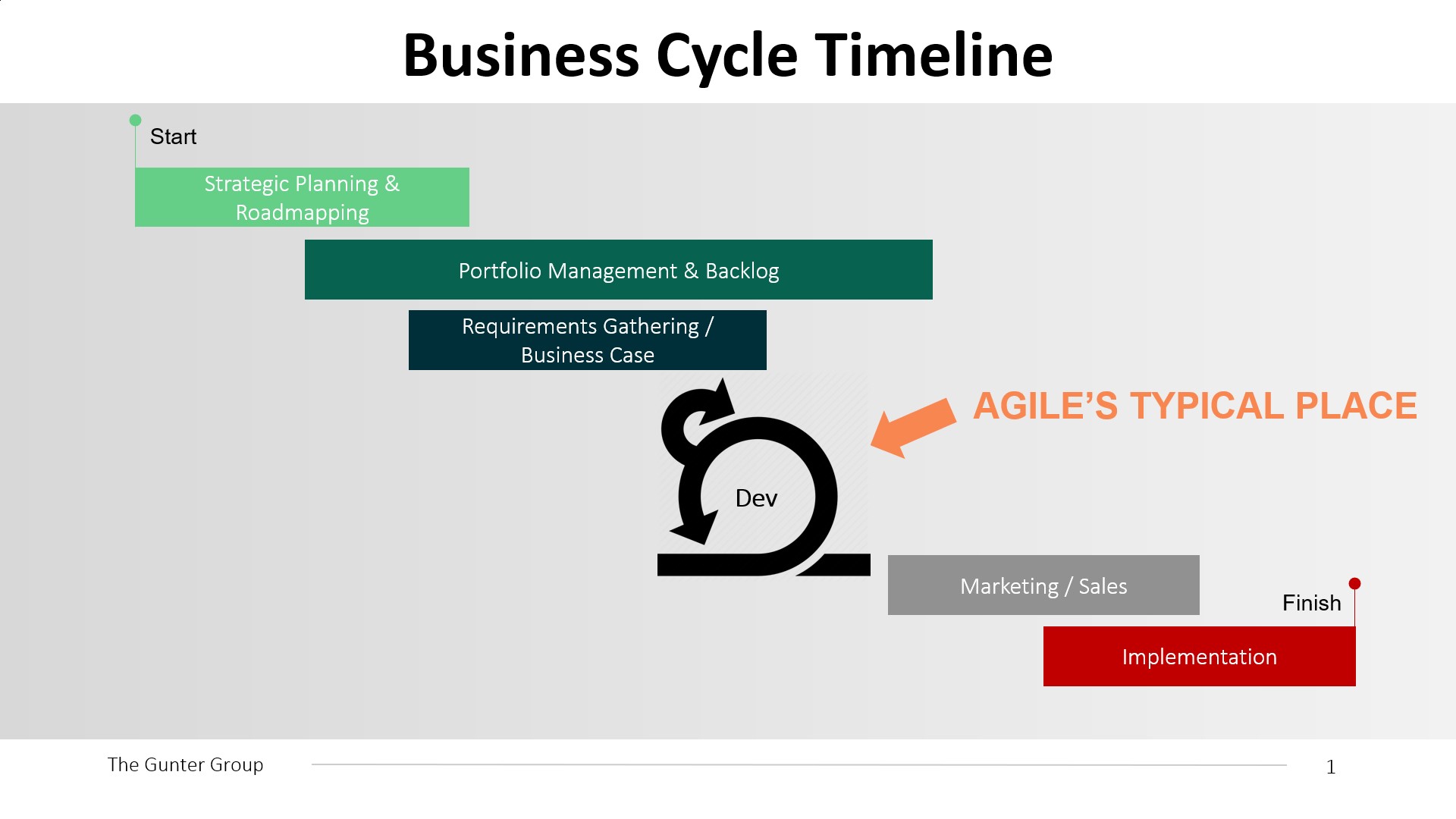MIKE & ASHLEIGH GUNTER:
LOOKING BACK & LOOKING AHEAD
We are really excited to be celebrating The Gunter Group’s 10 year anniversary! It has been an incredible journey these past 10 years, and we have so much for which to be thankful and proud.
Mike founded the company in 2011 with the intention of building a firm that could do meaningful work for clients, locally in Portland (to start), and that would serve our community. He also wanted to create a learning culture in which people of different experience levels and backgrounds could chart their own course and thrive, and do that in a super collaborative environment where the team not only valued working together, but also enjoyed each other’s company as part of the deal.
We are pretty proud to say we feel like that’s the environment that has been created at TGG over the last 10 years! Not only in Portland, but in our other markets in the Pacific Northwest and Western U.S.
We are fortunate to have not only worked with a lot of different clients and client companies, but to have also made many friends along the way. We feel a deep level of gratitude to all of our clients who, in the beginning especially, were willing to take a risk on a scrappy start up consulting firm trying to establish itself. Thank you!
We are also so proud of our team. It is meaningful and significant to us to have team members that have been with us since the beginning; when we could all fit around a lunch room table. Those team members have been so critical to the success of the firm, and to attracting more and more highly skilled and experienced people to the firm. Our company is our team, and our culture is what drives us.
The culture that has been built at TGG is what led to our Non-Negotiables. These 6 core values – Collaborative, Integrity, Intellectual Curiosity, Thrives in Ambiguity, Emotional Intelligence, Grounded Confidence – emerged organically a few years ago from discussing how we were already operating as a team. They represent our North Star as a firm, and govern how we work together as a team as well as with our clients and communities.
We look at things like this: we get to be surrounded by 50 something people that we respect professionally and enjoy personally. We are so fortunate! The desire to maintain our culture is what drives our decisions around growth and the future.
We are so excited about what the future brings for TGG in the next 10 years and beyond, and we want to thank everyone who has been with us on this journey so far. Here’s to the next 10 years!
OUR NON-NEGOTIABLES:
A LOOK BACK
A year and a half ago, we introduced a blog series on our company’s Non-Negotiables. At TGG, our Non-Negotiables are six traits and characteristics that guide us in our everyday interactions with each other, our clients, and our communities. They are the pillars on which we have built, and will continue to build, the company.
The Non-Negotiables came about in a particularly organic way. We did not sit down in a “strategy session” to “identify our Non-Negotiables”. They came about naturally as we thought about the values that are important to us, how we wished to create, cultivate and maintain relationships, our culture, and most importantly….the traits and characteristics we saw really successful TGGers demonstrating. The Non-Negotiables became an articulation of how we were already living.
Our Non-Negotiables are reflected not only in our day to day interactions, but in our recruiting, our professional development, and our feedback process. They are our framework for holding ourselves accountable in our work and relationships, and it is our greatest point of pride that our team consistently reflects them.
Our six Non-Negotiables are:
- 1. Collaborative
- 2. Integrity
- 3. Intellectual Curiosity
- 4. Thrives in Ambiguity
- 5. Emotional Intelligence
- 6. Grounded Confidence
When we began this blog series, we asked different members of our team to write each of the six blogs, and we are really proud of how they turned out. The authors reflect a group of individuals with different backgrounds, varying years of experience (and time with the company), diverse perspectives, and different working styles. We also sat down and filmed the historical context of our Non-Negotiables and how they guide our focus as we grow our firm.
Little did we know that half way through this blog series, we would find ourselves in the middle of not only a global pandemic, but also significant societal upheaval in the ongoing fight for equity, inclusion and racial justice.
We knew how our Non-Negotiables guided us in “normal” times, but how would they hold up in such uncertain and stressful times?
The answer is that we have relied upon them even more heavily. We focused on taking care of and supporting each other (Integrity, Emotional Intelligence). We engaged even more deeply, and in many cases with more flexibility and an even stronger sense of service, with our clients (Thrives in Ambiguity, Intellectual Curiosity, Collaborative, Grounded Confidence). We also revamped our recruiting and evaluation processes to further embed these characteristics and traits (all six).
We believe the increased level of depth and focus on our Non-Negotiables has been motivating and rewarding for our entire organization. It has also furthered our commitment to putting people and culture first in times of prosperity and uncertainty alike.
Our Non-Negotiables continue to be the most accurate representation we have of our company’s culture. They reflect who we are and who we will continue striving to be as we build our team and company.
We hope you have enjoyed this blog series as much as we have enjoyed sharing it. We encourage leaders and teams to think critically about the aspirational and lived culture you desire for your organization and orient everything around bringing it to life.

About the Author:
Mike is passionate about client service and leading people. He enjoys watching people grow, develop, and discover their true path. Mike is a visionary and forward thinker with extensive multinational experience and a proven track record of serving clients. With more than 25 years of business leadership and consulting in a wide variety of challenging and ambiguous environments, Mike got his start in the industry at Deloitte Consulting and has since held executive leadership positions in consulting, supply chain services, and public education organizations.
PRESSING PLAY ON PAUSED PROJECTS IN THE COVID-19 ERA
Since March, the COVID-19 pandemic has changed the way we work, the way we live, and the way we interact with the world. To cope with these widespread changes, organizations have had to make tough choices and “hit the pause button”, delaying projects and strategic initiatives.
We are now seeing enterprises reinstating their paused projects and initiatives, but in a changed world where challenges such as limited and/or remote staff, constrained budgets, and emerging competing priorities need to be factored into the mix. Organizations need to relaunch project work in a strategic way that accounts for today’s ever-changing business climate as well as the increased pressure employees are facing while navigating the complex COVID era.
Before deciding to restart a project, consider the following questions:
1. Are there environmental, emotional, or other considerations that should be taken into account before kicking off this project again?
2. Is the project still relevant and does it represent a productive use of time?
3. Staffing levels may have been impacted. Team members may be overwhelmed with competing priorities. Does the organization have adequate staffing and resourcing for this project or is there a need to secure outside assistance to support internal staff?
4. Does this project provide clear benefits regardless of possible uncertainty in the future?
5. Are there risks and costs to the organization by further delaying the project?
Strategies for moving forward
Applying a comprehensive strategic framework to think through the complex logistical, financial, and human components of the project can help an organization ensure multiple angles have been considered before moving forward with stalled projects.
The steps outlined here are relevant for any project initiation, but it’s particularly crucial now to make sure that the organization is fully prepared to launch an initiative in a thoughtful and informed way.

Evaluate and Revise Strategy: As our global situation evolves, public health policies enacted to mitigate the effects of COVID-19 will impact the availability of resources and timing of many projects.
Additionally, it is important to re-evaluate the big questions—those considerations that are less tactical and for which planning is more difficult. How does this project align with the organization’s core values, and are those values changing in response to the impacts of COVID-19?
Lastly, there may be tactical components of the original project strategy that may not be conducive to a COVID-19 environment. For example, brainstorm sessions, project meetings, and testing will likely take place remotely. Timeline and toolset considerations may also need to be adjusted.
Align Stakeholders: Even in the best of times, projects often begin prematurely, before stakeholder alignment is adequately reached. Now more than ever, it is imperative for the success of any reinstated work that stakeholders are informed, aligned, and have a renewed commitment to contribute towards the successful culmination of the project. As appropriate, leaders should seek to foster stakeholder participation and feedback in the prioritization process to align on the purpose of the project and to provide consistent messaging to employees and consumers. Commence replanning efforts by conducting a stakeholder analysis and integrating the findings. Overlooking this vital step could result in major roadblocks and setbacks throughout the remaining life of the project.
Resource Project: The resources originally allocated for the project may now be unavailable, team members may lack required skill sets, or they may not currently have the bandwidth to contribute to another project. Therefore, the need for both external and internal support should be properly assessed.
Recently, McKinsey & Company emphasized the need for leaders to focus on reskilling and upskilling their workforce to deliver new business models in the post-pandemic era. Companies also face a learning curve as managers figure out how to lead their teams virtually, build social capital, and maintain cohesion without the benefit of in-person interactions. As companies contemplate returning to the workplace, a new set of skills is also likely to emerge for the transition.
Sometimes a major reskilling effort isn’t feasible or practical to fill key needs for a project. In this scenario, pulling in outside expertise or resources may be the best option. Consultants are often brought into the fold of a project to fill an experience, knowledge, or skill set gap or even as an extra set of hands for a daunting effort where the organization’s future hiring picture is unclear.
Build Execution Roadmap: As things continue to change, a well developed and clearly communicated execution roadmap will help keep the project team’s eye on the prize. The steps taken so far in restarting the project—updated strategy, aligned and informed stakeholders, and prepared project resources—are the building blocks of an execution roadmap. Identify where it is possible to include flexibility points in an execution strategy. Planning for potential changes to “Plan A” will allow for an easier path forward if additional unexpected changes occur in the life of the project.
Employ Agile Execution Model: There’s no better time than now to embrace an agile methodology. By definition, the agile project management methodology is designed to be collaborative, flexible, and adaptable to change, and the change introduced to organizations by COVID-19 has put it to the ultimate test. Research conducted by McKinsey & Company found that companies with agile practices embedded in their operating models have managed the impact of the COVID-19 crisis better than their non-agile counterparts.

Communicate and Engage the Org: Effective communication and engagement can be challenging, especially given the challenges of physical distance, work-life balance, and a multitude of other distractions. Project details must be communicated to the right people at the right time.
Many organizations are also at the point where employees are hitting conference call and email fatigue. Since the majority of our communications are now limited to back-to-back video calls or an ever-expanding email inbox, communications are at greater risk of being lost in the shuffle.
Fortunately, there are many tools and resources available to help streamline communications in 2020, some of which may already be familiar and some lesser known:
– Facilitation tools (MURAL, retrium, MS Teams, klaxon, miro, STORMZ)
– Communication tools (Skype, Zoom, Google Hangouts)
– Presentations & Meetings (Ideaboardz, Conceptboard, workplace, slack, Google Meet)
– Project Management (Smartsheet, Microsoft Planner, Teamwork, Confluence, Jira, Basecamp, Trello, asana, N)
– Team Building (Kahoot!, TEAM MOOD, Dr. Clue, donut)
– Events (Meetyoo, HEXAFAIR, ENGAGE, VIRTUALIST
Build Rapid Feedback Mechanisms: Integrating feedback loops, both internal and external, into the project’s workflow, such as cadences in the Kanban method, for example, offer a powerful communication tool that fosters efficient and continuous improvement through effective adaptation to the often evolving needs of one’s client. It is valuable to build a mechanism, such as frequent, effective meetings, to facilitate constant and constructive evaluation as a team.
Moving forward with grace
With all the tactical and strategic planning that is needed to evolve an organization or advance a project forward, it is important not to lose sight of the human element. The planning process should be imbued with emotional intelligence, described as the ability to appropriately apply emotion to manage and solve problems—an approach with many tangible and far-reaching benefits within any organization.
In many different ways, it has been a challenging year and people are facing internal and external hurdles that could not have been predicted a year ago. Contributing to a project is a wonderful growth opportunity, gives people a chance to connect with their teammates towards a common goal, and produces tangible results. However, it is more important than ever for leaders to show that they care about their team.
Deeply considering the outcome of new or restarted work on employees and consumers has never been more important. Prioritizing the work ahead should consider not only the immediate benefit to the organization itself but also the benefits of doing right by the people of the organization in the long term.
At The Gunter Group, we can help implement the project leadership and process improvement strategies discussed above. Contact us to learn more about how we can support and optimize your organization.

About the Author:
Kara is a collaborative and detail-oriented consultant specializing in project management, organizational change and strategic communications. She has an ability to jump quickly into complex situations and scenarios, which allows her to understand and deliver on her clients’ key priorities within tight deadlines. Kara is also very skilled at considering issues with a fresh perspective, allowing her to suggest and implement viable solutions that may not have been previously considered by an organization. With a diverse background in communications, marketing analytics, team leadership and project management, Kara has enjoyed bringing strategic solutions to her clients for over 10 years. She has worked in a wide range of industries for many nationally-recognized brands, primarily in the technology, healthcare, sportswear, and early childhood education sectors. Kara holds a B.S in Business Administration and Marketing from Central Washington University. She is also a Certified Scrum Master and PROSCI Certified Change Practitioner. In her free time, Kara enjoys spending time in the great outdoors with her family of four.
OUR NON-NEGOTIABLES: THRIVES IN AMBIGUITY
At The Gunter Group, the leadership traits and characteristics that define us are our Non-Negotiables: Collaborative, Integrity, Intellectual Curiosity, Thrives in Ambiguity, Emotional Intelligence, and Grounded Confidence. These traits and characteristics guide us every day in our interactions with clients, each other, and our community.
At TGG, we value the ability to thrive in AMBIGUITY because it enables us to embrace the unique challenges our clients face. With a collaborative team who share diverse backgrounds and experiences, we partner with our clients to navigate complex and uncharted terrain. By utilizing cutting edge tools and applying lessons learned, we trek through the obscure to create structure and definition so that our clients’ visions become reality.
One thing that sets TGG apart from our competitors is our approach to solving client challenges. We understand that each engagement is unique and often highly ambiguous—and adjust our approach accordingly. Some of our clients have a clearly defined program scope, while others simply know they need to get something done but are unsure where to start. Our team approaches complex challenges with curiosity and adaptability to cut through the ambiguity and chart a path towards meaningful change. We lead by asking questions, taking notes, and synthesizing complex sets of information to help our clients move forward effectively. We build from the details and then apply best practices from our past experiences, drawing from our client’s strengths and knowledge in a collaborative effort to build structure and deliver results.
Several years ago, we partnered with one of Oregon’s largest employers to lead a significant initiative to transform their struggling operations department within the company’s second-largest line of business. Sales were lagging, employee turnover was high, and morale was low. From the onset, the need for change was evident but the cause of the underperforming business and approach to the turnaround strategy was unclear.
To understand the big picture, we had to dive deep. We took a data and process-driven approach. We performed a comprehensive current state analysis and used the findings to inform a strategy, define a future state, and build an implementation plan with our partners. With an informed and clearly defined plan in place, we implemented standardized processes and reconfigured systems and tools to reduce inefficiencies. We outlined resource needs and constraints to stabilize operations, worked with internal partners to revamp the product line to make them more marketable and profitable, and developed measurable KPIs to evaluate the strategy and make adjustments where necessary. By defining an effective change management strategy and plan we worked with the client team to deliver this transformation with cohesive messaging that was compelling to the organization, clients, and target customers.
Often, the key to gaining traction and building a strategy that works is first fully understanding the situation and the problems that need to be solved. Comprehensive current state analysis, input from all levels of the organization, and effective change management helped clear a path forward. The result was record annual revenue in a $300M+ line of business, decreased silos across the organization, and new streamlined processes and tools. This is just one example of how we are often brought into a highly ambiguous situation, bring structure to the ill-defined, and drive clarity.
We have made it a priority to build a team capable of thriving in ambiguous situations so that we can help our partners develop and implement creative and comprehensive solutions for their organizations.

More about John Drake:
John has developed broad experience in managing client business needs and relationships in a wide variety of complex environments. He is adept at creating structure around ambiguous deliverables by digging into the details in data-driven environments. Comfortable in any client setting, John is able to integrate within different teams, quickly understand the complexities of the task at hand and, above all, add value. John possesses diverse experience working in high-tech, retail, construction, power utilities, and training and development industries. From project managing large projects and developing organizational process improvements as a business analyst to overhauling a company’s CRM system, John can tackle client needs from many angles. John holds a B.A. from the University of Oregon and an M.P.A. from Portland State University. He is also a Certified Scrum Master and SAFe 5 Agilist. Outside of work, you’ll find John on the mountain bike trails in the sun and rain and on the mountain when there’s snow.
OUR NON-NEGOTIABLES: INTELLECTUAL CURIOSITY
At The Gunter Group, the leadership traits and characteristics that define us are our Non-Negotiables: Collaborative, Integrity, Intellectual Curiosity, Thrives in Ambiguity, Emotional Intelligence, and Grounded Confidence. These traits and characteristics guide us every day in our interactions with clients, each other, and our community.
When I think of intellectual curiosity, I think of someone who is constantly yearning for new input and has a natural curiosity to learn and understand complex systems. Someone who is aware of their blind spots, has the motivation to seek out additional expertise when needed, and focuses on improving their decision making abilities.
At The Gunter Group, we search for individuals who exhibit intellectual curiosity because this trait tends to be a significant indicator of someone who makes good decisions and thoughtful recommendations. Almost everything we do in consulting is about helping our clients make the most informed decisions possible, ranging from small-scale projects to strategic visioning.
I was recently talking to a client about some challenges a potential client was having with Workday. They had already implemented the software but it wasn’t operating well—business units weren’t happy and were finding it difficult to agree on ways to improve it. Frustration was growing and their leadership team approached us, asking for process improvement and system configuration to resolve the issues.
So, I got curious about their situation, wanting to dig into the root cause of the problem and determine the underlying causes of frustration. As we talked further, the CIO shared more about each business unit and their respective leaders. It became clear that they were unable to find consensus when it came to problems stemming from the application. Even when they could agree on WHAT should be done, they would disagree on HOW.
Through a series of conversations, I helped the client pivot from the assumption that they had a Workday problem to a realization that their core issue was around decision making and governance. Now we are working with this client to address the root cause of their issues and it was my curious inclination that led to a solution which will have lasting impacts within their organization.
On a more personal level, intellectual curiosity has been a recurrent theme throughout my life. My undergraduate experience was a function of my interest to rigorously investigate the philosophical roots of my own belief system. I found the most difficult program I could, one that would challenge me on multiple levels, and pursued it as a source of intellectual growth. My military career was punctuated by the sheer enjoyment I found in having to learn new jobs frequently. The life of a Junior Officer in the Navy was one in which I made frequent role changes in order to quickly learn how to effectively balance mission completion and shipboard life.
And now, as a Principal Consultant and a Market Leader for TGG, managing work across multiple clients in multiple states, my career in consulting is still satisfying my thirst for knowledge because of the opportunity to learn new things with every new client engagement. Enjoying the opportunity to shift from client to client is one of the main reasons consultants enjoy what they do and that is certainly true for me. It fosters both intellectual curiosity and engagement with the work itself. I’ve always said that I don’t know what I want to be when I grow up; a sentiment stemming from curiosity in many different domains. Consulting is where my natural intellectual curiosity intersects with the real world and TGG offers the opportunity to grow and thrive in a constantly shifting environment.

More about Tony Schweiss:
Tony builds teams to support strategic change initiatives and helps leaders plan for highly impactful change. Thriving in the face of complex problems, he brings clarity to ambiguous situations and organizational questions. Leaders quickly come to trust Tony as a partner in making their tough decisions. A former Surface Warfare Officer in the U.S. Navy, Tony’s leadership and management philosophy is tempered by a career of bringing calm and planning to high-impact, high-stress scenarios. His track record of success in defining and overcoming challenges in demanding environments has led to consistent portrayals of him as an outstanding manager and a leader among his peers.
AGILE & THE BATTLE FOR BETTER BUSINESS
Agile is a solved problem, in the tech world. In software development environments, it’s now a staple. You would struggle to find a single development team or technology project that isn’t using an agile framework to plan and execute their work. The idea has long passed from experimental to adoption; it has saturated the market.
Little proof is needed for this claim of complete saturation. Just look at the list of certification-ready agile methods: SAFe, Scrum, Crystal, DSDM, Feature-Driven Dev, ASD, Lean Software Dev, Disciplined Agile, RAD. Beyond the certifications you’ll find (often decades old) schools of thought around Wagile, eXtreme Programming, and others. When you can certify yourself in a handful of different frameworks around the same concept, then it’s safe to say that the school of thought is here to stay.
Outside of tech, though, the potential of agile is still largely unrealized. Waterfall methodology is still the dominant approach to project and product management. At the Gunter Group, we feel this is a missed opportunity. The practice and benefits of agile should no longer be the sole domain of nerds.
The Coming Revolution
Agile has revolutionized development, or rather, agile is the response to development’s demand for revolution. Waterfall was the child of the uniquely meandering progress of early software projects. Early development borrowed from manufacturing, aerospace, and defense methodologies of the time, and depended on long runways for delivery (and even occasionally relied on physical manufacturing processes).
However, as software leapt forward, the waterfall methods of old failed to serve the split-second pivots required by the go-to-market environment of modern technology. Software development demanded a new kind of organization, one as iterative and quickly-changing as the 1’s and 0’s upon which it was built. From this need, agile was born.
It is a mistake, however, to limit agile to the tech environs of its birth. There is nothing about agile that is necessarily specific to software development. We repeat: there is nothing about agile that is specific to software development. It is a framework that has application well beyond its homeland.
A renaissance is before us. Agile has yet to have as meteoric an effect on the broader business world as it has in all-things-tech, but this change is on the horizon. In this article, we will explore several simple means for the application of agile in non-tech environments.
This article is for agile practitioners. It is also for anyone else who works in a world of projects and output-oriented teams. That means everyone. Yes, you read that right: everyone. (Even construction has room for agile. There are certainly limits to the application, as failing fast in that landscape could be catastrophic. Construction is a mature industry with many unique frameworks for success, but the concepts of agile are still applicable in creative ways. Design iteration, proposing and awarding subcontractors, and daily standups with subs might be areas for immediate agile-inspired growth).
Tried and true in the tech-focused backbone of our ever-changing world, the revolution of iterative, cross-functional, self-forming teams will ripple through organizations and markets of all kinds. The thoughts below are intended to give you a leg-up in this revolution, to find yourself ahead of the curve in the battle for better business.
The Business Cycle & Agile: An On-Again, Off-Again Relationship
Agile has a place in the business cycle, but only one place. The picture below illustrates this (a notable exception to this limitation can be found in the SAFe framework, which has made progress in utilizing agile in a broader business context). Agile is often embraced by a development team or manufacturing process, but everything upstream and downstream from these teams still think of their work in terms of waterfall. As the landmark book The Lean Startup explains in detail, this often results in products reaching the market after months or years of investment without validation that the product is even needed.

This can be fixed. At TGG, we have seen successes and failures with clients attempting to embrace agile methods. There is no one right or wrong way to embrace agile, but we have seen some general activities or mindsets prevail over others.
Below is a list of high-level considerations you should keep in mind if you are interested in adopting agile in your non-tech team:
Don’t Do Agile for Agile’s Sake: It can be easy for a leader to say, “It works for the Unicorns so it should work for us.” As a result, agile or lean Centers of Excellence sprout up in organizations that are not ready or willing to embrace these methods. Agile only works when a team understands why they are doing it and are engaged in the method in a way that adds value. It is all about developing business agility and driving value to the customer—not just about “doing” agile.
Find the WHY (Value Added): People are more willing to change when they understand why a particular change will benefit them. This is universally true, and is a fundamental concept that drives all successful change efforts. When accompanying a team that is new to agile, break the component parts down into WHYs that demonstrate the value added by an agile element. More on this below.
Use a Light Touch: For teams that have been thinking in terms of waterfall timelines and years-long delivery plans, agile is not intuitive. This is even harder for teams that don’t operate in a project environment, such as operations, finance, or HR. It is uncomfortable for someone new to agile to imagine releasing their work before it is “completely done.” For these people, adopting agile represents a culture change. Use a light touch, and embrace change management best practices. Educate on the value of embracing agile ceremonies and artifacts (see Point #2), and give them time to adjust to a new work culture.
Think About Slicing Small: You might think that the key difference between waterfall and agile is the speed of the work. However, this doesn’t quite capture the power of agile methods. Agile teams don’t work faster—they work smaller. Sprints are only successful when a team can break their work into smaller chunks that can be accomplished, reviewed, and delivered to customers in a matter of weeks. When looking to adopt agile in your non-tech team, this can be one of the hardest yet most rewarding mindsets to shift. Ask yourself the question: “What can we complete this month and deliver to our consumers?”
Start with Standups and Retrospectives: When in doubt, the easiest place to start with agile adoption is with standups and retrospectives. Gather your team together so everyone can give a 30 second status update and share any blockers. Encourage recognitions, because they actually do boost engagement. Periodically bring everyone together to reflect on the way they work, and encourage them to think creatively about small changes they can make to boost productivity or morale. These rituals are baked into agile systems but are often overlooked in the recipes of other structures. They are ceremonies that are simple to implement (their WHYs are easy to understand), and they immediately add value to your team.
Find the WHY: Representing the Value Added by Elements of Agile
In tech, it is easy to take agile for granted. There is little need to investigate why that is the case. Dev teams embrace the frameworks without the need to justify why. Tech simply trusts the efficacy of the model.
Non-tech environments are more skeptical, however. Business units accept the place of agile in their organization’s tech division, because the quality and turnaround of their tech solutions are desirable outcomes. But a chasm exists, an us versus them void between tech and business, in which each realm agrees to the ways of the other without cross-pollination. “Agile works for IT,” says the non-IT department, “but we will carry on as we always have.”
When making the crossover from tech to non-tech, asking WHY is essential. When making the case for an agile adoption in a non-tech environment, it is not enough to know THAT agile works; you also have to understand WHY it works.
The core concept of this article is this: by breaking down the framework into a series of WHYs, you are able to build a business case for its adoption.
In Search of WHY
Before diving into case studies, we’ll pause to give a couple brief examples of how to find WHYs. First, we’ll give an example of finding a WHY, and then we’ll observe an organization that has used this WHY thinking approach to maximize the benefit of agile enterprise-wide.
We’ll start with an example of a WHY. Any agilist knows of two basic roles that tend to show up in any agile framework: the Scrum Master and the Product Owner. But why are these roles so valuable? In short, they capture a tension that exists in every project: throughput versus quality.
The Product Owner represents the customer. He or she is ultimately accountable for the product that hits the market. They massage the backlog, prioritize features, and vouch for the throughput and objectives of the customer. The Scrum Master, on the other hand, is a servant to the team. He or she is responsible for maximizing the value of the team’s work by removing impediments and maintaining focus.
In every project, there is a tension between speed and quality, and often these elements are at odds. Teams have to choose between the speed or quality of their throughput. The roles of the Product Owner and Scrum Master capture this tension, striking a balance that delivers a timely, quality product.
Here’s the WHY: agile purposefully creates this tension. The Product Owner advocates for the deliverable; the Scrum Master advocates for the team. There is no consensus without dissent, and the dissent built into the agile framework ensures a consensus between the competing demands of immediacy and quality.
You’ll notice, in this example, that the WHY is subtle. It simply looks at two roles and understands the purpose for each of them, both individually and together. But their purpose, the WHY, is powerful. Maintaining the tension between throughput and quality ensures that an agile team continuously delivers a product that is valuable.
There are many examples of organizations finding the WHYs, but a fantastic example can be found in the way Spotify approaches an agile culture. Spotify, a tech company, started from the assumption that agile adds value. But they also embraced a key mindset: rules are a good start, but let’s break them when needed. This led Spotify to match its needs (autonomous squads, short term goals, and an enterprise-wide holistic product strategy) to the WHYs of agile (throughput vs quality, flexibility, consistency, autonomy, alignment) to create a truly unique structure of tribes, squads, chapters, and guilds.
These unique, overlapping structures don’t conform to any particular agile method, but point to the WHYs of agile as necessary predecessors. The result: a nimble organization and healthy culture that keeps pace with the ruthless, fast-paced competition of streaming music solutions.
Agile in Business: Case Studies
So far, we have discussed the concept of embracing agile elements in non-tech teams. Let’s look at a few examples of this concept in action.
The Lean Startup – Laundry Services in India
A current popular expression of these concepts can be found in the book, The Lean Startup by Eric Ries. Over the course of 300 pages, Ries walks the reader through a home-grown approach to agile adoption grounded in decades of direct and indirect (consulting) experience with entrepreneurs and startups.
Core principles of The Lean Startup include small slicing vision into minimum prototypes, testing those prototypes early and often, validating assumptions, and promoting a culture of constant adaptation and growth. These agile-adjacent methods are all implemented without any of the typical agile ceremonies or artifacts.
There are dozens of case studies in the book that demonstrate the WHYs in action. One example comes from a laundry service launched in India: Village Laundry Service (VLS). In 2009, VLS was poised to launch a low-cost modest-return laundry service in a virtually untapped market in India.
The company, however, paused to create small-scale experiments to validate product assumptions and zero-in on specific customer needs. They embraced a model of iterative testing and adaptation that allowed them to target a rollout that was specifically tailored to customer needs. This meant that, once scaled, VLS was sure that they were mass-producing a product that customers would actually buy.
National Insurance Provider – Accounting Team “Scrum”
An insurance provider engaged us to assist with an ERP implementation that would replace the general ledger that accounted for tens of billions of dollars in managed assets and revenues. In the organization, there was a Lean Center of Excellence that had been advocating for agile ceremonies across the organization for several years. However, the accounting department had not yet adopted any of these elements. Early in the project, the team decided to organize themselves into a scrum team, with all the usual ceremonies and artifacts.
Initially, the transition was difficult. The team consisted of financial analysts and operations managers, and no one had project experience (let alone a knowledge of scrum). The “scrum team” was also larger than recommended, with more than 15 people.
Over time, the team used the ceremonies to break down their activities into a series of WHYs. Daily standups helped illuminate blockers and inefficiencies, and sprint retrospectives allowed the team to reflect on what was working and what wasn’t. Before long, the team developed a rhythm to their work and were able to break out the scope into smaller slices that more efficiently made use of their resources. Additionally, they were able to quickly track and validate decisions made about the product, which allowed for quicker pivots that better met the needs of their internal stakeholders.
HR Job Posting – Introducing Small-Slicing to Recruiting
On November 20, 2019, TGG’s Tech Services Lead Matt Jamison presented to AgilePDX on the topic of adopting agile elements in non-development teams. To illustrate his ideas, he shared an example of applying agile to talent acquisition in an HR department, with regard to staffing practices.
The Problem Statement: the struggle to find and hire talented resources presents a series of constant hurdles. Even without complications, it is difficult to sort through the tides of resumes to find individuals who have the professional and cultural acumen needed for a particular situation.
But hiring does not occur in a vacuum, and complicating factors abound. Hiring teams struggle to match job postings to the continuously changing needs of their organization. Market factors like shifting regulations, emerging fields, and competitive innovation require constant adaptation to who or what an organization needs on their teams. On top of this, the company mission is regularly transitioning due to adaptations from corporate strategy and new products.
When hiring for a team, there is a need for agility. Despite this, overworked recruiters are often incapable of the continuous change that would empower them to hire better, faster, and smarter. Poll HR professionals and you will likely hear the same thing, “I’m not getting the right talent. It takes too long to get talent. How do I assess the growth of employees and allow for advancement? I don’t respond quickly enough to changes in my organization and market.”
Enter the Agile WHYs: how would an HR team look to agile to address some of their struggles? Start with the problems:
– There is too much to change and not enough time to adapt
– Changes in job descriptions require a lengthy approval process
Looking at these problems, several agile WHYs start to jump out in response:
– Vertical slicing deliverables into bite-sized stories
– Sprint structure allows for near-term pivots on vertical slices
– Empowering team members to problem solve allows for quicker creative solutions
– Iteration on pain points or strengths allows for continuous improvement
An HR team embracing these WHYs wouldn’t have to embrace a full scrum adoption to realize their benefit. They could small-slice a job description, looking at components of a specific description instead of the whole thing. They could explore ways that recruiters could update parts of job descriptions in a quicker manner without needing full bureaucratic and legal review involved with a new job post. They could collect user stories from teams with upcoming resourcing needs instead of a list of qualifications and specific experience, empowering recruiters to be more creative in finding the right fit.
By embracing the WHYs of agile, teams can borrow the best parts of the methods and ceremonies to foster agility. And by doing so, they are living up to the core principles of agile, putting individuals and interactions before processes and tools.
We want to close this paper by reiterating a key point that is foundational to adopting agile in new environments: don’t do agile for agile’s sake. If either managers or direct reports fail to understand the reason why they are making a change, then that change is destined to fail. Do not embrace agile just because it’s trending in high-dollar markets.
There are good reasons for the successful outcomes of agile—a successful adoption requires an understanding of these reasons first. After witnessing successes and failures in the market around us, we firmly believe that a team must understand the WHYs of embracing agile methods before jumping in.

More about Matt Jamison:
Matt is an experienced solutions architect with a results-oriented understanding of the intersection between reality and architectural theory. He has the ability to plan, develop, and implement large-scale projects while maintaining impeccable attention to detail. With 20 years of functional information technology experience, Matt has end-to-end IT knowledge from layer 1 networking to application API interaction. An expert in mapping technology solutions to business needs, Matt is also able to conform to required regulations while maintaining IT best practices. Matt’s experience spans multiple industries, including healthcare, telecommunications, and security and software. He is an AWS Certified Solutions Architect. Outside of work, Matt enjoys the outdoors and all things bike-related.

More about Josh Bathon:
Josh is a creative problem solver with experience in project management and process improvement. Josh thrives in situations that challenge him to learn quickly and adapt to new environments. Leveraging his unique background in seminary formation, Josh brings emotional intelligence and self-knowledge to his interactions to build lasting, goal-oriented relationships. Josh has experience in healthcare IT, primary education administration, and non-profit service, environments in which he has developed a team-oriented leadership style geared toward high-performance outcomes. Josh holds a Bachelors in Philosophy and History from the University of Notre Dame. When he’s not working, Josh loves to read fiction and philosophy, as well as explore the cuisine and quirks of the Portland Area with his wife.
REFLECTIONS ON CHANGE MANAGEMENT IN UNCERTAIN TIMES
The Gunter Group hosted the ACMP Pacific Northwest chapter’s monthly Coffee Chats in April, May, and June. Just as everyone was figuring out how to deal with so many things changing, we facilitated a three-part webinar series entitled ‘Reflections on Change Management in Uncertain Times’. The conversations were timely but the change lessons we learned are timeless.
Afterward we sat down with our host, Stephen Bacon, to get his perspective on how to navigate through large-scale change.
In case you missed the webinar series, you can view replays here:
Part 1: How Things Have Been Disrupted
Part 2: How We Are Adapting
Part 3: What We Are Learning

More about Stephen Bacon:
Stephen is passionate about understanding the overarching strategic goals of an organization and leading the changes that are so often necessary to implement those strategies. His expertise is managing strategy and change projects across a variety of organizations. Stephen has spent twenty years leading initiatives at Fortune 500 companies, academic institutions and not-for-profits in the education services, technology, financial services, consumer products, and healthcare industries, including extensive international experience. Stephen is a Certified Associate in Project Management (CAPM), holds a green belt in Six Sigma, and is accredited in various psychometric assessments (MBTI, ESCI, NBI). He holds a B.S. in finance and marketing from Boston College and an M.A. in organizational psychology from Columbia University. In addition to his service on not-for-profit boards, Stephen has three young children and a chocolate lab. He lives and works in Portland, Oregon.
REFLECTIONS ON CHANGE MANAGEMENT IN UNCERTAIN TIMES: PART THREE
Part 3 (of 3): What will we carry forward?
We completed the last session of our series with ACMP Pacific Northwest — ‘Reflections on Change Management in Uncertain Times’. Thank you again to ACMP for the opportunity to facilitate this important conversation.
Part 1 of the series was about how things have been disrupted, Part 2 was about how we are adapting, and in Part 3 we had a very open conversation about what we are learning.
This conversation was very candid and we highly encourage you to watch the replay. Some highlights of our discussion were around
– The importance of vulnerability and connection during this time
– Staying curious and humble in our learnings
– Not attempting to continue business “as usual”
– Creating new normals in our work environments
– Being a present listener and practicing empathy
A replay of our June discussion is now available and we encourage you to listen in on this collaborative information sharing!
Hosted by:
Stephen Bacon
Senior Consultant
The Gunter Group
TGG HOSTS ACMP’S JUNE COFFEE CHAT
On June 12th, we’ll wrap up our three-part series around ‘Reflections on Change Management in Uncertain Times’ with ACMP Pacific Northwest.
In April, we discussed what has been disrupted due to COVID-19. In May, we discussed how we are adapting to the changes. In June, we’ll look ahead to what we will carry forward.
This month, we look forward to discussing questions like:
– What has forever changed in the way we work?
– What DON’T we want to go “back to normal?”
– What will the “new normal” look like?
We encourage you to consider these topics ahead of time as this will be an interactive discussion.
REGISTER NOW to join us on June 12th at 9am PDT as we finish out this series!
